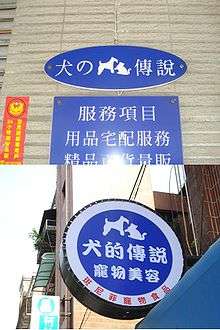No (kana)
| no | ||||
|---|---|---|---|---|
| ||||
| transliteration | no | |||
| hiragana origin | 乃 | |||
| katakana origin | 乃 | |||
| kana gojūon | ||||||||||||||||||||||||||||||||||||||||||||||||||
|---|---|---|---|---|---|---|---|---|---|---|---|---|---|---|---|---|---|---|---|---|---|---|---|---|---|---|---|---|---|---|---|---|---|---|---|---|---|---|---|---|---|---|---|---|---|---|---|---|---|---|
|
||||||||||||||||||||||||||||||||||||||||||||||||||
の, in hiragana, and ノ, in katakana, are Japanese kana, both representing one mora. In the gojūon system of ordering of Japanese syllables, it occupies the 25th position, between ね (ne) and は (ha). It occupies the 26th position in the iroha ordering. Both represent [no].
| Form | Rōmaji | Hiragana | Katakana |
|---|---|---|---|
| Normal n- (な行 na-gyō) |
No | の | ノ |
| Nō | のう, のぅ のお, のぉ のー, の~ |
ノウ, ノゥ ノオ, ノォ ノー, ノ~ |
Stroke order
 Stroke order in writing の |
 Stroke order in writing ノ |

To write の, begin slightly above the center, stroke downward diagonally, then upward, and then curve around as indicated by the arrows.

To write ノ, simply do a swooping curve from top-right to bottom left.
Character
| Character | の | ノ | ノ | |||
|---|---|---|---|---|---|---|
| Unicode name | HIRAGANA LETTER NO | KATAKANA LETTER NO | HALFWIDTH KATAKANA LETTER NO | |||
| Encodings | decimal | hex | decimal | hex | decimal | hex |
| Unicode | 12398 | U+306E | 12494 | U+30CE | 65417 | U+FF89 |
| UTF-8 | 227 129 174 | E3 81 AE | 227 131 142 | E3 83 8E | 239 190 137 | EF BE 89 |
| Numeric character reference | の | の | ノ | ノ | ノ | ノ |
| Shift JIS | 130 204 | 82 CC | 131 109 | 83 6D | 201 | C9 |
| EUC-JP, GB 2312 | 164 206 | A4 CE | 165 206 | A5 CE | ||
| HKSCS | 199 85 | C7 55 | 199 202 | C7 CA | ||
Alternative forms
| の / ノ in Japanese Braille | |||
|---|---|---|---|
| の / ノ no | のう / ノー nō/nou | Other kana based on Braille の | |
| にょ / ニョ nyo | にょう / ニョー nyō/nyou | ||
| | | | |
The Morse code for の, or ノ, is ・・--.
See also hentaigana and gyaru-moji for other variant kana forms of no.
![]()
History
Like every other hiragana, the hiragana の developed from man'yōgana, kanji used for phonetic purposes, written in the highly cursive, flowing grass script style. In the picture on the left, the top shows the kanji 乃 written in the kaisho style, and the centre image is the same kanji written in the sōsho style. The bottom part is the kana for "no", a further abbreviation.
Usage
の is a dental nasal consonant, articulated on the upper teeth, combined with a close-mid back rounded vowel to form one mora.
In the Japanese language, as well as forming words, の may be a particle showing possession. For example, the phrase "わたしのでんわ” watashi no denwa means "my telephone."
の has also proliferated on signs and labels in the Chinese-speaking world, especially in Taiwan because of its historical connections with Japan. (See Taiwan under Japanese rule.) It is used in place of the Modern Chinese possessive marker 的 de or Classical Chinese possessive marker 之 zhī, and の is pronounced in the same way as the Chinese character it replaces. This is usually done to "stand out" or to give an "exotic / Japanese feel", e.g. in commercial brand names, such as the fruit juice brand 鲜の每日C, where the の can be read as both 之 zhī, the possessive marker, and as 汁 zhī, meaning "juice".[1] In Hong Kong, the Companies Registry has extended official recognition to this practise, and permits の to be used in Chinese names of registered businesses; it is thus the only non-Chinese symbol to be granted this treatment (aside from punctuation marks with no pronunciation value).[2]
References
- ↑ "@nifty:デイリーポータルZ:中国に日本の「の」が浸透した". Portal.nifty.com. Retrieved 2016-04-21.
- ↑ "Business" Required to be Registered and Application for Business Registration: Business Name, Inland Revenue Department
External links
| Look up の or ノ in Wiktionary, the free dictionary. |


